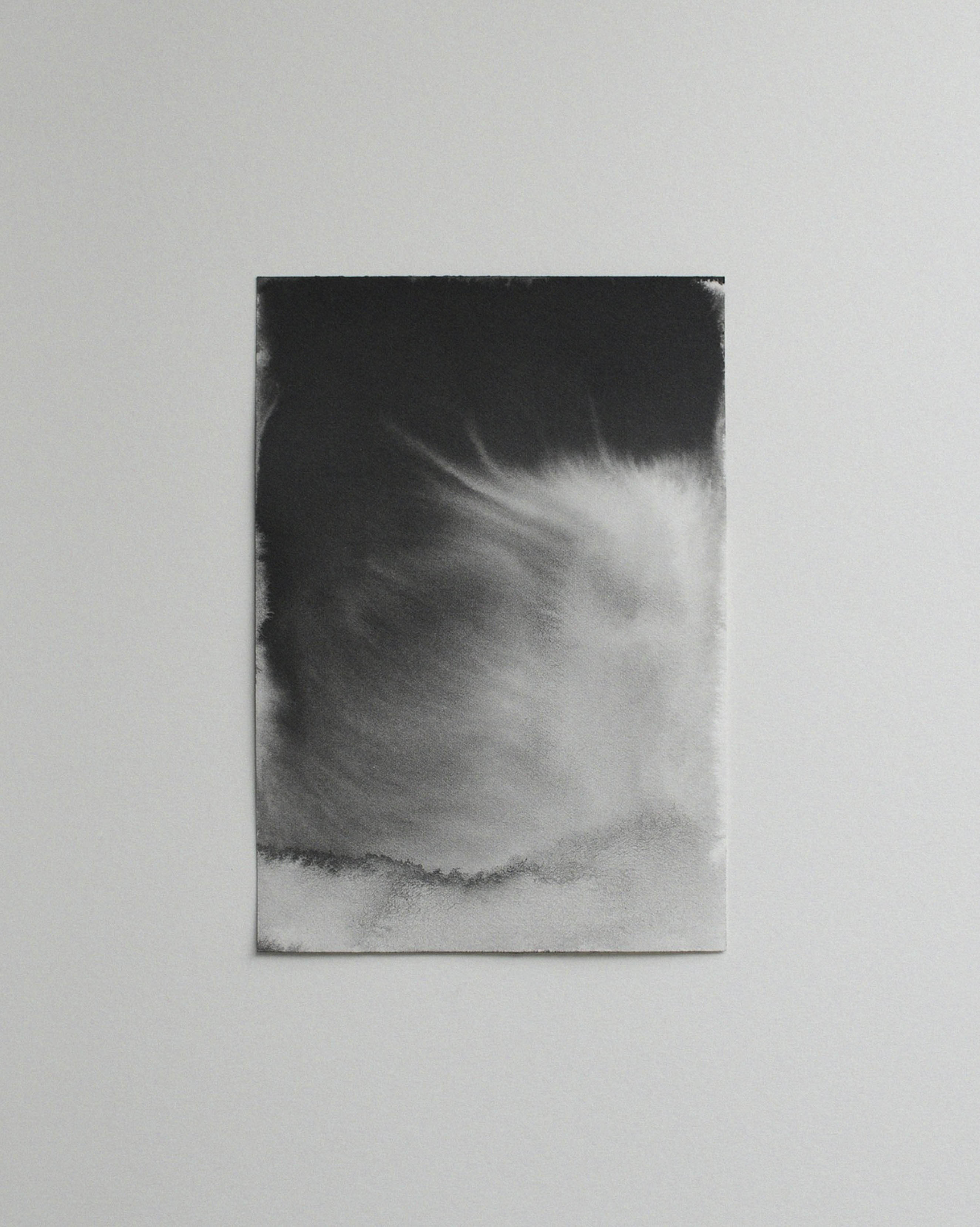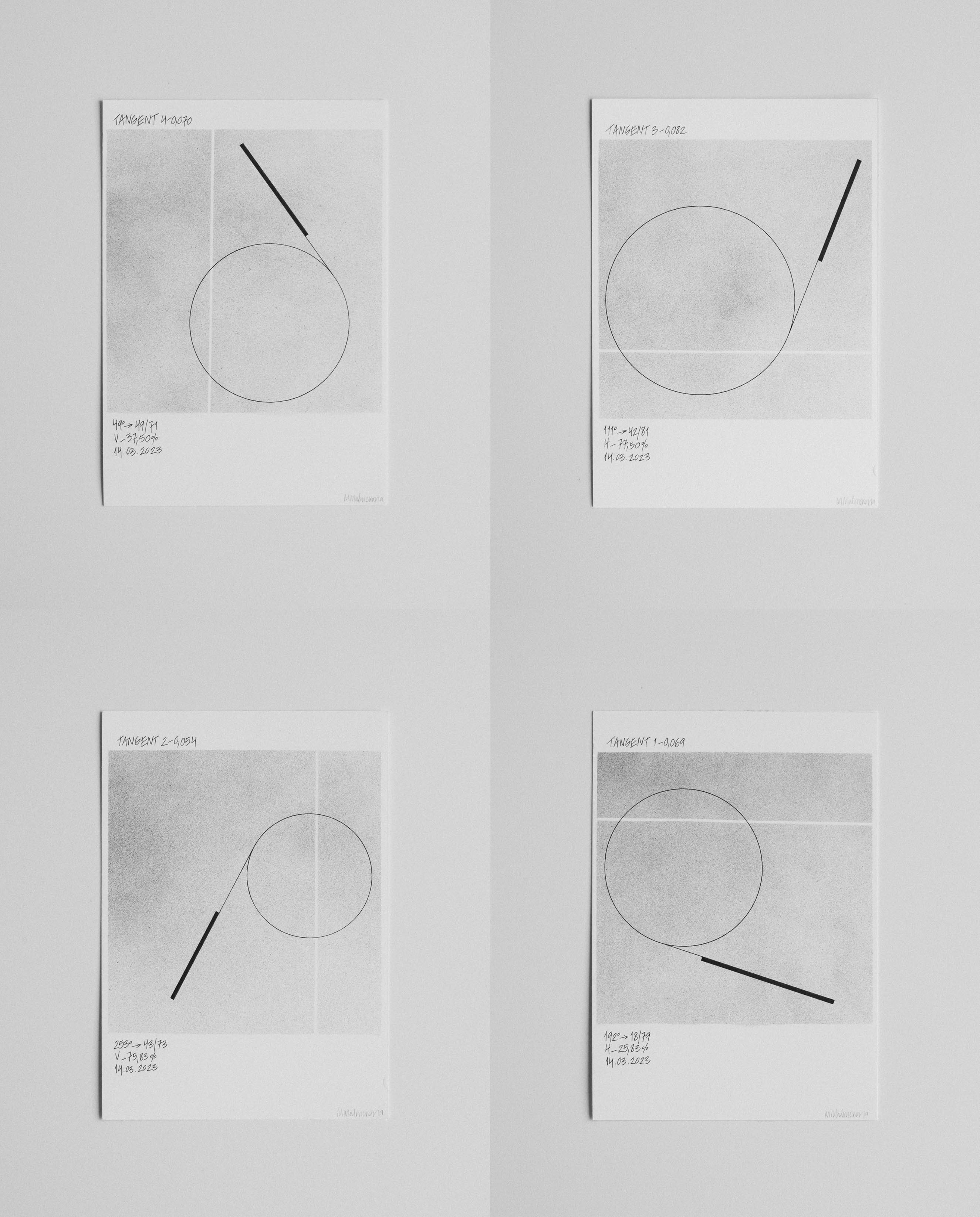Interview: Maja Malmcrona
Articles
Maja Malmcrona (b.1993) is a Swedish artist who is based in Zurich, Switzerland.
We interviewed her about herself.
What was your upbringing?
I grew up in a small seaside town in western Sweden. Looking back, it was a rather wholesome small-town life: I spent most of my free time outdoors, either by the sea or in the forest, often alone (which suited my introspective self well). I loved photography and often went on long, solitary walks through these landscapes, photographing the various nooks and crannies of the miniature worlds I found therein.
As a teenager, however, this quiet existence changed quite rapidly when my father got a job in Switzerland and moved my sister and me there. Life in Switzerland was very different, with a much higher pace, increased expectations, and newfound battles. It was a long and painful process to get used to, but today it is something I am immensely grateful for, as it opened up whole new worlds of experience for me.

How did your career as an artist begin?
After graduating high school, I spent some time traveling, working various jobs, and taking short courses to try to figure out what to do next. I was still quite introspective, and I was deeply interested in what I can now recognize as a type of world-making: the creation of spaces where one’s imagination can dwell.
Until then, this had primarily taken the form of photography and poetry, but at some point during this time, it hit me to study architecture. Architecture was a field I had always been fascinated by, though for some reason I never seriously considered studying it myself. Once I found a school that offered it from an artistic rather than a technical perspective, I applied immediately.
Once there, I loved every second. Architecture, to me, felt exactly like that forest walk from my childhood, when I sat at the miniature riverbanks of tiny streams and imagined the worlds that could unfold there, created mental maps of their imaginary inhabitants, and organized their imaginary habitats.
Of course, such imaginative exercises are not what most real architects (beyond the universe) actually do, so after some time I wanted to backtrack completely—so much so that I moved to the UK to do a master’s degree in philosophy.

At that point, my primary creative outlet (beyond my architecture school projects) was writing, and I had been toying with the idea of pursuing it properly for years. To do so, I thought, I needed scaffolding in the technical part of writing and reasoning (since I did not struggle in the creative part).
Once again, I loved it, but I also found quite quickly that, although immensely interesting, philosophy and its medium of expression—words—were much too limited in expressing what I wanted to convey. “However expressive,” Aldous Huxley wrote in The Doors of Perception, “symbols can never be the things they stand for.”
Around this time, COVID-19 struck. I was living in a tiny student room at the time, and not being allowed to go outside at all was taking a big toll on me (as it did on many people around the world). Almost unconsciously, I began to develop a variety of coping strategies—all of them relating to art-making—and in the year to come, I delved deeper into drawing, painting, and sculpture than I had before, having found my language at last.
What is your inspiration?
Other than nature, music, architecture, and art in general, I think most of my inspiration comes from books. I read a lot, and I often find ideas in these books that my body immediately latches on to. I say body because I often seem to experience these ideas spatially rather than conceptually. It is difficult to explain, but it is often because the sentence or idea seems to convey some sort of abstract movement, transformation, or contradiction.
“A book that does not contain its counter book is considered incomplete.” (Jorge Luis Borges, Fictions)
“In this world, shipmates, sin that pays its way can travel freely” (Herman Melville, Moby-Dick).
“Thus we cover the universe with drawings we have made.” (Gaston Bachelard, The Poetics of Space)
When one is speaking of the essence of things, it often happens that one can only speak in generalities” (Haruki Murakami, The Wind-Up Bird Chronicle).
“Signs form a language, but not the one you think you know. (Italo Calvino, Invisible Cities)
Who is your favorite artist?
Different aspects of different artists fascinate me, so it is very difficult to pinpoint one artist in particular. It is also heavily dependent on what type of project I am working on at the time, what I have looked at lately, and what state of mind I am in.
At some point, I looked a lot at early modernism (including Malevich, Mondrian, and Kandinsky), and at another, I was intrigued by abstract expressionism (Motherwell, Rothko, and Martin). Gutai continues to fascinate me (Kazuo, Yoshihara, and Matsutani), as do Dansaekhwa and Mono-ha. In terms of contemporary artists, I have looked a lot at Jorinde Voigt, Sarah Sze, Not Vital, and Rachel Whiteread (among many others) lately.

What excites you the most when you create your work?
One thing that always fascinates me about the creative process is its unexpected twists and turns. This seems especially true if I start a project with a clear idea of the finished work in mind. The clearer the idea, it seems, the more difficult the journey of finishing the project becomes, and the more different the outcome actually ends up as well.
Somehow, this seems to be an inherent part of the process. I am reading a book by the musician Nick Cave right now, and he calls these “residual ideas”—although they seem interesting enough initially, they are actually nothing but the unused remnants of your last project. This is also why they appear so effortless and comfortable: because your mind is recognizing them from somewhere else. In the end, however, they do nothing but deceive you, and the process of creation becomes more difficult if they are involved because it takes a lot of energy to get rid of them.
On the other hand, a project that begins with a completely blank slate has a much higher chance of actually discovering something new. (Even though it is much more difficult to get started initially since it does not rely on any leftover ideas.) This and many other things continue to surprise me, no matter how many projects I have managed to complete over the years.

Profile
Maja Malmcrona is an artist born in 1993 in Gothenburg, Sweden. She holds a Bachelor of Fine Arts degree in architecture from Umeå University and a Master of Science degree in philosophy from the University of Glasgow. She lives and works in Zurich, Switzerland. With her background in working as an architect as well as her studies in philosophy, she is interested in space and our experiences of it, which are reflected in her own creations. She has been exhibiting her works throughout Europe and other continents. Also received a prize for the Young Art Award by Art Forum Ute Barth. She continually produces her works in black and white, which represent and become shadows and lights. Her series of works are also influenced by Japanese artists and cultures, such as In Praise of Shadows by Junichiro Tanizaki, who thrived on shade and shadows. Her works which are influenced by Japanese literature and cultures contain this unique atmosphere and it attracts the audience’s eyes. When observing her works, which thoroughly focus on space and the experiences and sensations that arise from it and present artwork not as objects but as experiences, one might feel a sense of repeatedly conducting phenomenological experiments.
Artist Statement
My work relates primarily to an examination of space and our experience of it. I believe that art should de-emphasize our societal obsession with objects and consumerism, instead favoring phenomenological experiences. I use abstraction as a tool to stay clear of an overemphasis on these objects, being more interested in the multitude of meanings that lie behind them. In my view, a work of art is a portal―a moment in time in which we may seek emotional refuge from the overload of information prevalent in our contemporary society. My work is grounded in modern and contemporary perspectives of art, literature, and philosophy, investigating the continuity across these fields. I work primarily in drawing, painting, and sculpture.
Related Links
There are no related links.
